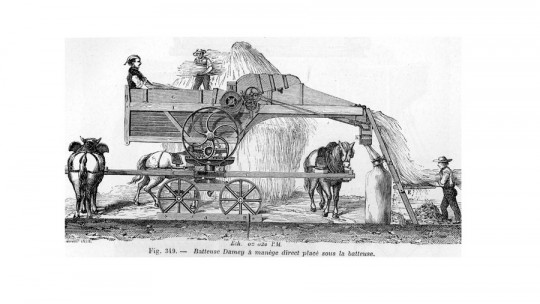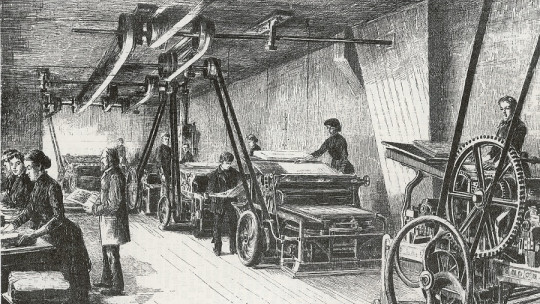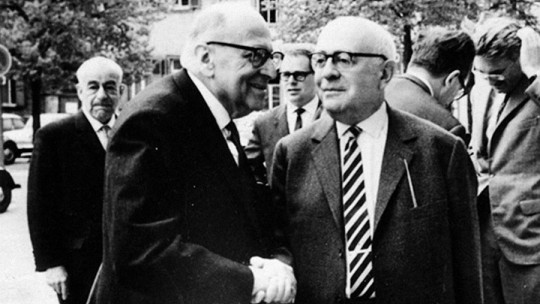Among many other things, the social sciences have offered us different ways of naming and studying the history of Western societies. Currently, we have different concepts that refer to transformations in production relations, economic changes, technological production, etc.
One of these concepts is the Postindustrial Society , which refers to the transformations that the social organization established after the industrial revolution has undergone. Below we explain what the Postindustrial Society is and where it comes from, as well as 5 of its main characteristics.
From the Industrial Revolution to the Postindustrial Society
The reason why it has been called Postindustrial Society is to refer to the time and the transition process of a society that was established based on the consequences of the Industrial Revolution of the 18th century (the Industrial Society), to the society that has been established based on the production of that new technology.
The type of society that had been generated before the Industrial Revolution is known as Preindustrial Society. Among other things, said society was organized by primary relationships (face to face), rural lifestyles, agricultural production, an economic system of feudal and slave government, among other things.
Since the Industrial Revolution, The work organization was transformed towards the primacy of mass production , where each person is part of a large manufacturing system. Technological innovation is booming, based on cost-benefit logic. With this, labor relations also become salary-based and dependent on the market.
Subsequently, the Postindustrial Society emerged, mainly from the technological revolution, the transformation of global geopolitics, economic interdependence on a global scale, the relationships between economy, state and society, where the state regulates markets, generates competition at a global level, and ceases to be a welfare state, and finally, an internal restructuring of capitalism (Castell, 1997 in Sisto, 2009).
These transformations have been explained through many other concepts. We have, for example, the knowledge society, the information society, the technocratic era, among others. The multiplicity of terms responds to the need to understand the different ways in which our societies have developed.
For example, if we use the term “knowledge society” it is surely because we pay special attention to the ways in which the latter is produced, and if we talk about Postindustrial Society it is probably we will put more emphasis on the production relations that are established
5 characteristics of the Postindustrial Society
The concept of Postindustrial Society emerged in the 70’s and has been worked on by different people. Daniel Bell is recognized as one of the first to use and develop the term, especially from his book The Coming of the Post-Industrial Society of 1973.
Among other things, Bell described 5 dimensions that are characteristics of the Postindustrial Society and that establish important differences with industrial societies: the sector of the workforce, the preference of the occupational sector, the preeminence of theoretical knowledge and the production of both mechanical and mechanical technology. as an intellectual.
1. Where is the workforce?
According to Bell, unlike agricultural societies and industrial societies, postindustrial societies have the characteristic that the workforce is concentrated in the service provision sector (health, education, government).
In the words of Bell (1976), industrial society is distinguished from previous ones by an important change in the economic sector: there is a step from the economy that produces goods to the economy that produces services.
2. Who is the labor sector aimed at?
The consequence of this is explained by Bell as another of the characteristics that distinguish postindustrial societies: The labor sector is practically reserved for people who have technical and professional training (specialized).
That is, the occupational distribution maintains a preference for professional and technical classes.
3. The primacy of theoretical knowledge
To train technicians and professionals, the construction and transmission of theoretical knowledge is essential. Postindustrial society has the characteristic of giving primacy to the production of this type of knowledge, not only to impact the occupational sector, but also regarding the political management of companies
Bell (1976) calls this an “axial principle,” referring to the centrality of theoretical knowledge as a source of political innovation.
4. Generate mechanical technology
The main resource to offer solutions to the problems faced by post-industrial society is the development of technology. Not only develop technology but also control its distribution and regulation.
In other words, the postindustrial society maintains development expectations and its orientation towards the future in the production of technological projects.
5. Generate intellectual technology
Related to the previous point and to the primacy of theoretical knowledge, postindustrial society constantly generates solutions based on ordered and finite sets of operations, that is, on the production of algorithms, on the most intuitive resolutions, which in other societies had had more presence.
This creation of intellectual technology also constitutes a new way of making decisions at the political level.









